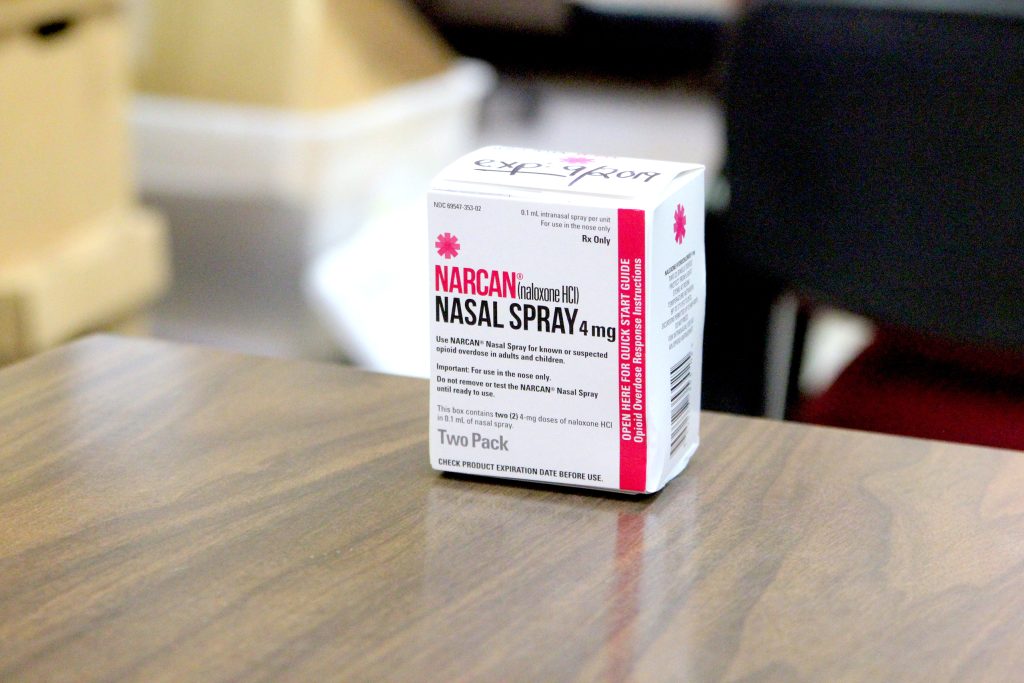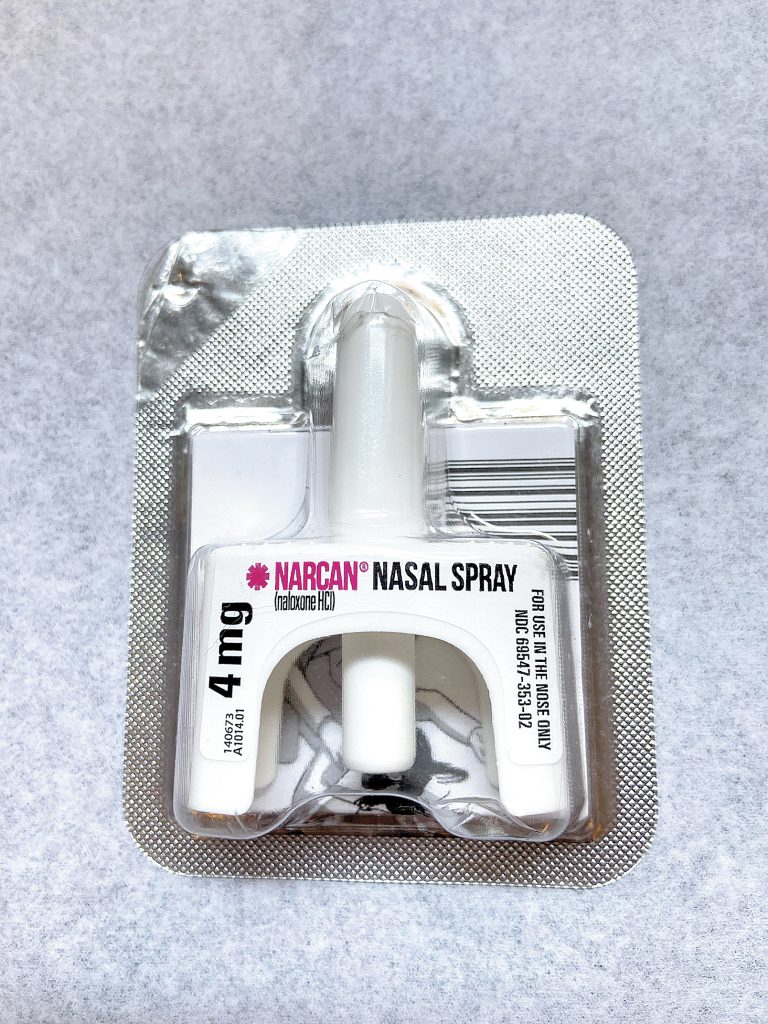
By Stephen Appezzato
In an effort to combat the opioid crisis, New Jerseyans can now anonymously obtain naloxone for free at participating pharmacies.
The state Department of Human Services launched Naloxone365 this month, increasing accessibility to the lifesaving drug. Currently over 600 pharmacies around the state are enrolled in the program, with more than 50 in Monmouth County offering the drug.
Under the program, anyone 14 and older can obtain the drug without paying, providing personal information or even a reason to pharmacies. Residents do not need a prescription. One two-dose nasal spray kit is provided each visit.
In a statement to The Two River Times, Monmouth County Prosecutor Raymond S. Santiago applauded the new state initiative, saying the “law enforcement community recognizes that naloxone saves lives” and the program “allows law enforcement and our partners in the substance abuse recovery field to make a second chance count.”
Naloxone is a medication that can rapidly reverse opioid overdoses. An opioid “antagonist,” the drug binds to opioid receptors in the body. Naloxone received FDA approval in the 1970s but was not as widely used as it is now. Over the past decade, government and private sector efforts to reduce the stigma around naloxone, increase access and spread awareness of its life-saving capabilities have made the drug more prevalent.
According to Michael Litterer, the vice president of RWJBarnabas Health’s Institute for Prevention and Recovery (HIPR), naloxone “is a major and impactful tool for substance use disorder” and “is probably the one thing that has the greatest evidence of saving lives.”
The HIPR is a grant-funded arm of the RWJBarnabas system which focuses on substance abuse disorder, programs for prevention, early intervention and recovery support services for people with addictions.

Naloxone is a fast-acting medication that reverses opioid overdoses and can often prevent death. File Photo
According to Litterer, naloxone “has not been as accessible as we really need it to be, which is why this new program that the state is rolling out is really quite innovative.”
“It’s definitely a great thing that will save a lot of lives,” he said.
The opioid epidemic is an issue that affects millions across the county. Last year in Monmouth County, the Office of the Attorney General reported 151 suspected overdose deaths and 990 naloxone administrations. Since 2015, a growing percentage of drug overdoses have included fentanyl, a potent opioid that is sometimes “cut” into more traditional drugs like heroin or cocaine. Fentanyl poses a concerning public health crisis as only a minute amount of the drug can be fatal. According to the Drug Enforcement Agency (DEA), the Sinaloa and Jalisco drug cartels are primarily responsible for the majority of fentanyl that is trafficked into the U.S. Using chemicals often sourced from China, these cartels produce the drug and mix it into more expensive substances.
Litterer noted that in New Jersey overdose numbers are plateauing, a sign of improvement. But, paradoxically, “there are growing disparities amongst the race, ethnicity and gender of the individuals who are dying of overdoses” according to data, he said.
“We’re seeing decreases in males, but seeing increases in females; we’re seeing increases in black residents and decreases in white residents. Overall, our numbers are trending in the right direction, but there is still a lot of work to do for certain populations where it seems the services are not as accessible or not as impactful,” he said.
Litterer also discussed the importance of reducing the stigma around naloxone and opioid addiction, warning “if people don’t really buy in and understand why it’s important and why it saves so many lives, it’s going to limit its effect.”
Even for those who are not drug users, it can still be wise to obtain the life-saving drug as you never know when you or a loved one might need it, Litterer said.
He credited the state’s Be a H.E.R.O. program for educating the public on the importance of naloxone availability and reducing the stigma around addiction.
Discussing current overdose trends that the HIPR is observing, Litterer revealed a growing concern about the recent increase of xylazine found in overdose cases. Xylazine, sometimes referred to as “Tranq,” is a potent sedative used in veterinary settings. Xylazine can be mixed with other drugs to make them more potent. The grave concern among public health officials is the drug is not affected by naloxone because it is not an opioid, which “medically really complicates things,” said Litterer.
The National Institute on Drug Abuse reported drug overdose deaths involving xylazine skyrocketed from 2% to 26% from 2015 to 2020, with the issue worsening. In the spring, the White House announced a plan to reduce overdose deaths from fentanyl and xylazine concoctions by 15% by 2025 through a drug testing study and development of new treatments.
A kilogram of xylazine can be illegally purchased from Chinese suppliers, with prices ranging from just $6 to $20 according to the DEA. The National Institutes of Health reported that the average dose of xylazine in fatal cases was 1,200 milligrams – which is just .0012 of a kilogram.
Naloxone365 is a significant development in combating the opioid epidemic. But, as the inexpensive, dangerously potent and naloxone-immune xylazine is increasingly present in street drugs, a new drug crisis is sweeping through communities.
The article originally appeared in the August 17 – 23, 2023 print edition of The Two River Times.














